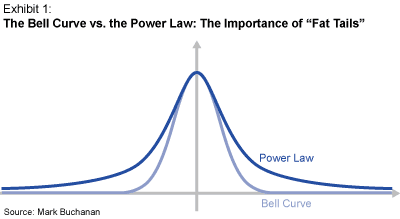The heading may seem like a large contradiction, but I believe it is not.
The Tip from a Friend
Why does a tip from a friend mean so much to you compared to an ad in a magazine or on television? Well, friendship is strongly related to honesty and the ability to keep secrets between each other. When you break either of the two, the good relation is sacrificed. Hence, if you get a tip from a friend, you believe it because (1) he is not likely to lie and (2) this may be an important secret your friend tells you about.
In sources [1] and [2], the word-of-mouth-marketing (WOMM) idea is advised to be used more by companies. But, a WOM epidemic is hard to start. It is more art than science, but some references exist that may give some valuable advice. In "The Tipping Point" [3], a WOM-model is introduced, and I like it.
The main thesis of the book is that ideas, products and social phenomena may spread like epidemics. "The Tipping Point" happens when "the vital few" as apposed to the the trivial many starts to use, apply or advertise the idea and the "epidemic" spreads. Gladwell calls this group phenomenon the Law of the Few, and from my point of view it is simply another way of stating the Pareto Principle [3] (find the vital few that produce the impact).
To apply the Tipping Point insight, the key is how to select the vital few. Gladwell asserts that you need to find the "Connectors, Mavens, and Salesmen" that can cause the tip. Finding who those are again is still an art.
A great example of a product where the WOMM effect is seen, is Gmail. Yes, there has been considerable amounts of media coverage on the service, but the fact of the matter is that the service has never been advertised. Hence, the media coverage has only started by WOM. The service was originally also only accessible to those who have been invited. Hence, there became a sense of exclusiveness and secrecy in the service. The product then exploded!
Relationships of Trust
WOMM is great, but is not possible in all situations. The thing is that not all products can be marketed through your friends. Some products have the characteristics so that there is little interest for someone to tip a friend. Furthermore, there is for instance a lot of research that indicates that buyers do not tell about products or services they like, but they are very likely to tell their friends about the ones they do not like. There are some success stories of WOM-campaigns that spread by giving consumers incentives to spread the word - but there are in many markets legal challenges for these type of models.
So when WOMM does not work, you as a company often need to spread the word yourself. To be able to do that successfully you must build a relationship of trust with your customers [6]. In order to do that, why not look at the model for friendship and look for inspiration. Hence, giving a customer secret and good offers while keeping a sense of exclusiveness to the relationship is most likely what will attract and retain them.
[1] Word of Mouth Marketing - WOMM!
[2] Word-of-Mouth: The World's Best-Known Marketing Secret
[3] The Tipping Point

[4] The Pareto Principle
[5] GMail
[6] It's Not About Permission, It's About Trust



